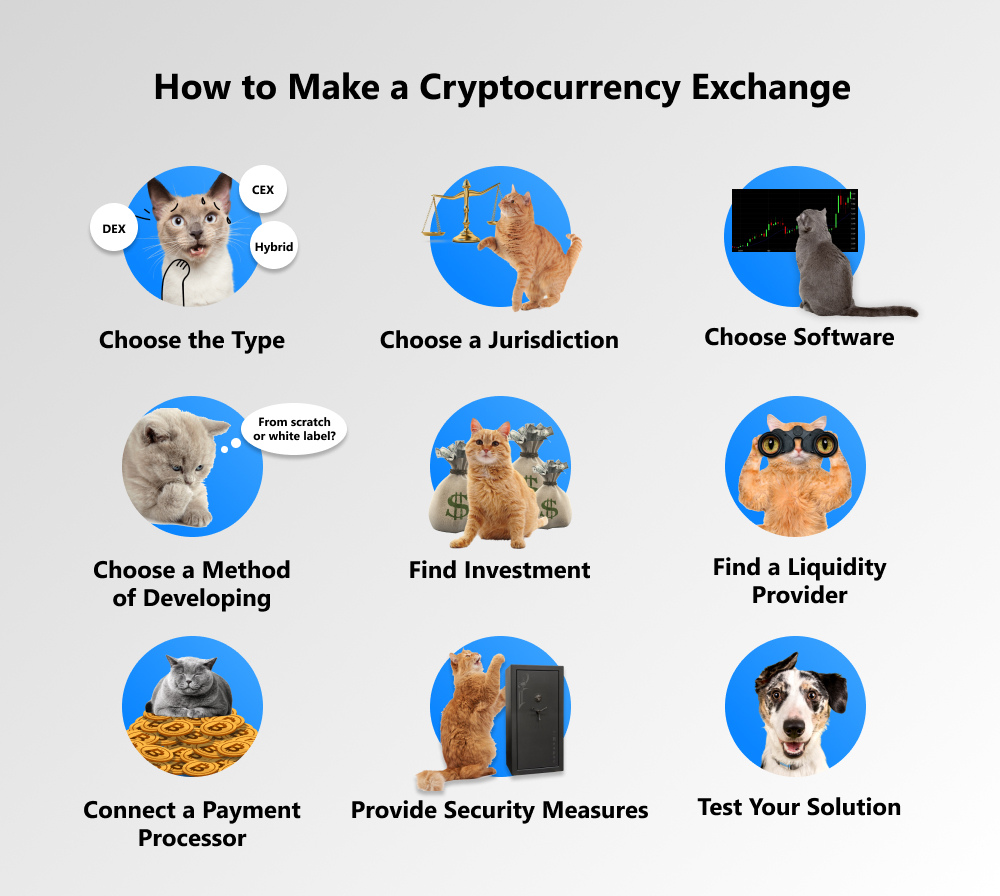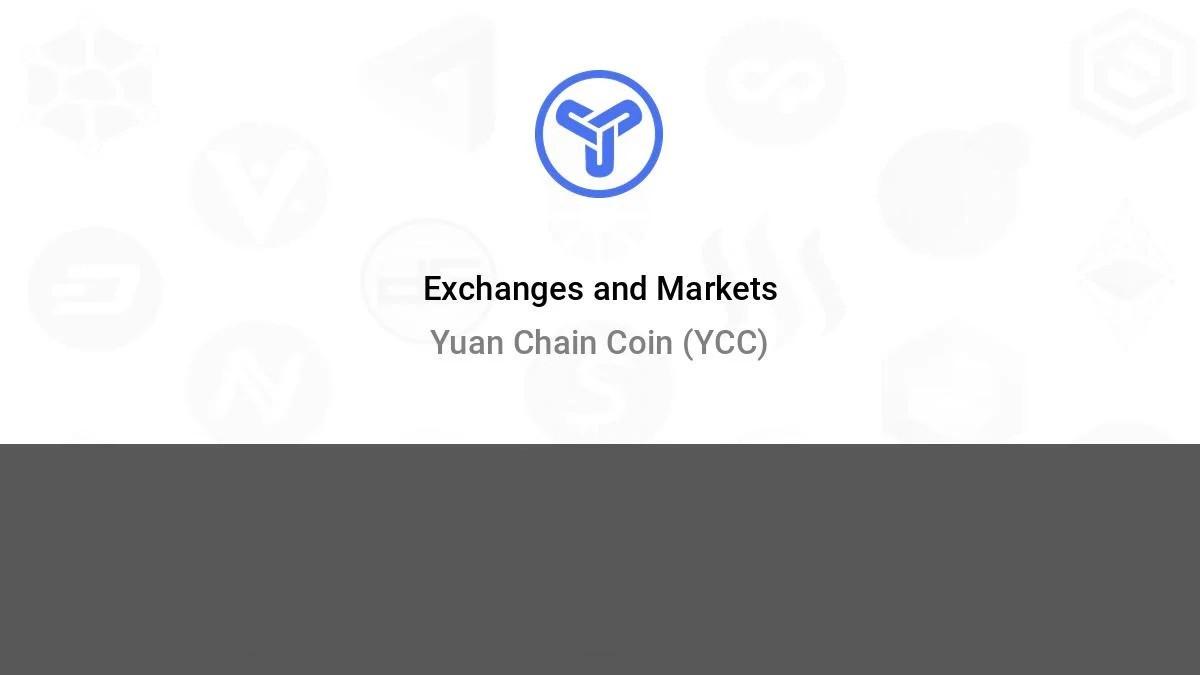Introduction
Welcome to the exciting world of cryptocurrency exchanges! In today’s digital age, cryptocurrencies have gained enormous popularity, and the demand for secure and efficient platforms to trade these digital assets is rapidly growing. Cryptocurrency exchanges play a vital role in facilitating the buying, selling, and trading of various cryptocurrencies, providing users with a convenient and accessible way to engage in the crypto market.
In this article, we will explore the process of creating a cryptocurrency exchange platform from scratch. From understanding the fundamentals of cryptocurrency exchanges to the development and launch stages, we will cover all the essential aspects involved in building a successful exchange.
Before diving into the technical details, it is crucial to have a basic understanding of how cryptocurrency exchanges function. Unlike traditional stock exchanges, cryptocurrency exchanges operate purely in a digital format. They enable users to trade one form of cryptocurrency for another or exchange cryptocurrencies for fiat currencies like USD or EUR.
The first step in your journey to create a cryptocurrency exchange is to prepare for the development process. This involves envisioning the key features and functionality of your exchange, designing an intuitive user interface, and establishing the necessary security measures to protect user funds and data.
Once you have a clear plan in place, the development process begins. This entails building the backend infrastructure of the exchange, implementing the required security protocols, and integrating with payment gateways to enable smooth transactions. Additionally, ensuring compliance with relevant regulations and conducting thorough testing are crucial steps before launching your exchange to the public.
Creating a cryptocurrency exchange can be a complex but rewarding endeavor. It not only requires technical expertise but also a deep understanding of the cryptocurrency market and user expectations. This article will serve as a comprehensive guide, providing you with the necessary insights and steps to create your own cryptocurrency exchange.
So, let’s dive in and explore the exciting world of cryptocurrency exchanges together!
Understanding Cryptocurrency Exchanges
Before embarking on the journey of creating a cryptocurrency exchange, it is important to have a solid understanding of how these platforms operate and the key components that make them successful. A cryptocurrency exchange acts as a digital marketplace where users can buy, sell, and trade different cryptocurrencies.
One of the fundamental aspects of a cryptocurrency exchange is the order book. An order book is a list of buy and sell orders placed by users on the platform. It includes information about the quantity of cryptocurrencies being bought or sold and the price at which users are willing to transact.
When someone places a buy order at a specific price, it is matched with a sell order placed by another user at the same or a lower price. This matching process is crucial for the smooth functioning of the exchange, as it ensures that there is a counterparty for every trade.
Another important feature of cryptocurrency exchanges is the trading pairs. A trading pair is a combination of two cryptocurrencies that can be traded against each other. For example, Bitcoin (BTC) and Ethereum (ETH) are common trading pairs. Users can buy or sell Bitcoin using Ethereum, and vice versa.
In addition to trading pairs, cryptocurrency exchanges often offer various order types to accommodate different trading strategies. Market orders allow users to buy or sell a cryptocurrency at the current market price, while limit orders enable users to set a specific price at which they want to buy or sell.
Security is a paramount concern in cryptocurrency exchanges, given the digital nature of the assets being traded. Exchanges implement various security measures such as two-factor authentication, encrypted communication channels, cold storage for user funds, and regular security audits to safeguard user accounts and funds.
Furthermore, liquidity plays a vital role in the success of a cryptocurrency exchange. Liquidity refers to the ability to buy or sell a cryptocurrency quickly without causing a significant change in its price. High liquidity ensures that users can easily enter or exit positions and find counterparties for their trades.
Understanding the intricacies of cryptocurrency exchanges is crucial to successfully develop and design your own exchange platform. By familiarizing yourself with the key components and functionality of cryptocurrency exchanges, you will be better equipped to create a secure, user-friendly, and efficient platform that meets the needs of cryptocurrency traders.
Preparing for Exchange Development
Creating a cryptocurrency exchange requires careful planning and preparation before diving into the development process. This section will outline the key steps involved in preparing for exchange development.
The first step is to define the objectives and scope of your exchange. Determine the types of cryptocurrencies you want to support, whether it’s Bitcoin, Ethereum, or other altcoins. Additionally, consider whether you want to offer trading pairs with fiat currencies, as this will require integration with banking systems and compliance with financial regulations.
Next, conduct thorough market research to identify your target audience and assess the competition. Understand the specific needs and preferences of cryptocurrency traders to tailor your exchange’s features and user experience accordingly. This research will help you differentiate your exchange and provide added value to users.
Consider the legal and regulatory framework within which your exchange will operate. Cryptocurrency regulations vary by country, and it is essential to ensure compliance with relevant laws to avoid legal issues in the future. Consult with legal experts who specialize in cryptocurrency regulations to navigate the legal landscape effectively.
One critical aspect of exchange development is selecting the right technology stack. Determine whether you want to build your exchange from scratch or use existing exchange software solutions. Building from scratch offers more flexibility and customization options, but it requires a higher level of technical expertise and time investment. Using existing software solutions can expedite the development process but may limit customization options.
Establishing strong security measures is paramount to gain user trust and protect their funds and personal information. Consider implementing measures such as two-factor authentication, encryption protocols, cold storage for customer funds, and regular security audits. Working with cybersecurity experts can provide valuable insights and ensure the robustness of your exchange’s security infrastructure.
Prepare a detailed project plan that includes timelines, milestones, and a budget. Building a cryptocurrency exchange is a complex endeavor, requiring coordination among developers, designers, legal experts, and other professionals. Ensuring a well-defined project plan will help you stay organized and monitor progress effectively.
Lastly, assemble a skilled development team or partner with a reputable development agency specializing in cryptocurrency exchange development. Look for professionals with experience in building secure and scalable platforms, as well as those who can provide ongoing support and maintenance for your exchange.
By adequately preparing for exchange development, you can lay a strong foundation for the successful creation and launch of your cryptocurrency exchange. Attention to detail and a thorough understanding of the market landscape will set your exchange apart and increase its chances of attracting a loyal user base.
Key Features and Functionality
When developing a cryptocurrency exchange, it is essential to consider the key features and functionality that will make your platform stand out and provide a seamless trading experience for users. This section will highlight some of the crucial features to include in your exchange.
1. User Registration and Verification: Implement a user registration system that allows individuals to create accounts and complete a verification process. This ensures compliance with Know Your Customer (KYC) and Anti-Money Laundering (AML) regulations and helps maintain a secure user base.
2. Order Book and Trading Engine: Develop a robust order book system and trading engine that efficiently matches buy and sell orders. An order book provides transparency and enables users to view real-time market data, including current buy and sell prices.
3. Trading Pairs and Market Orders: Support a wide range of trading pairs, allowing users to trade different cryptocurrencies against each other. Additionally, include market order functionality, which allows users to buy or sell at the current market price.
4. Limit Orders and Stop Orders: Enable users to set specific buying or selling prices with limit orders, giving them more control over their trades. Stop orders can also be useful as they allow users to set a trigger price and execute an order when that price is reached.
5. User Wallets: Provide secure and user-friendly digital wallets for each supported cryptocurrency. Wallets should allow users to deposit, withdraw, and store their digital assets securely.
6. Trading Charts and Analytics: Incorporate trading charts with various time frames and technical indicators. This allows users to analyze market trends and patterns to make informed trading decisions. Real-time market data and historical price charts are essential tools for traders.
7. Security Measures: Implement robust security protocols, including two-factor authentication, encryption, and the use of cold storage wallets for storing user funds. Regular security audits can help identify and address vulnerabilities in your exchange’s infrastructure.
8. Liquidity Management: Focus on maintaining sufficient liquidity on your exchange to ensure smooth order matching. Building partnerships with liquidity providers or implementing market maker programs can help boost liquidity on your platform.
9. Customer Support: Offer a responsive and efficient customer support system to address user queries and concerns promptly. Live chat, email support, and a comprehensive knowledge base can help users find answers to their questions.
10. Mobile Responsiveness: Optimize your exchange for mobile devices to cater to the increasing number of users accessing cryptocurrency exchanges through smartphones. A mobile-responsive platform will enhance the user experience and attract a broader user base.
By incorporating these key features and functionality in your cryptocurrency exchange, you can provide users with a comprehensive and user-friendly trading experience. Paying attention to user needs and market trends will help you differentiate your exchange and establish a strong presence in the cryptocurrency market.
Designing the User Interface
The user interface (UI) of your cryptocurrency exchange plays a crucial role in attracting and retaining users. A well-designed and user-friendly interface can greatly enhance the overall trading experience. This section will discuss the key considerations when designing the user interface for your exchange platform.
1. Simplicity and Intuitiveness: Aim for a clean and simple design that is easy to navigate. Users should be able to understand the platform’s functionality and perform actions, such as placing orders or managing their wallets, with ease. Minimize clutter and prioritize the most important features and information on the interface.
2. Responsive Design: Ensure that your exchange is responsive and can adapt to different screen sizes, including desktop, tablets, and smartphones. Responsive design will improve user experience and accessibility, allowing users to trade on the go using their mobile devices.
3. Clear Information Hierarchy: Use visual cues such as colors, fonts, and spacing to indicate the importance and hierarchy of different elements on the interface. Make sure that vital information, such as current market prices and user balances, is prominently displayed and easily accessible.
4. Trading Charts and Data Visualization: Incorporate visually appealing and interactive trading charts that provide users with real-time market data. Include various technical indicators and customization options to cater to the needs of different traders. Effective data visualization helps users analyze price movements and make informed trading decisions.
5. Consistent and Familiar UI Patterns: Stick to established UI patterns and conventions that users are already familiar with. Consistency in the placement of buttons, navigation menus, and other elements contributes to a seamless user experience. Unfamiliar or confusing design elements may lead to frustration and discourage users from utilizing your exchange.
6. Personalization Options: Provide users with the ability to customize their interface, such as choosing preferred color themes or rearranging elements. Personalization enhances user engagement and makes the trading experience more enjoyable for individuals with unique preferences.
7. Error Handling and Feedback: Error messages should be informative and user-friendly to guide users in correcting any mistakes or issues. Provide clear and concise feedback when users perform actions, such as placing orders or updating their account information, to ensure transparency and avoid confusion.
8. Easy Registration and Onboarding: Streamline the registration process and provide clear instructions on how to verify user accounts. Make sure the onboarding process is intuitive, guiding new users through the necessary steps to start trading on the platform.
9. Visual Branding: Establish a strong visual identity for your exchange by utilizing appropriate branding elements like logos, colors, and typography. Create a cohesive and recognizable brand that reinforces trust and credibility in the minds of users.
10. Accessibility: Take into consideration accessibility guidelines to ensure that users with disabilities or impairments can access and navigate your exchange. This includes providing alternative text for images, sufficient color contrast, and keyboard navigation options.
By focusing on these key aspects when designing the user interface of your cryptocurrency exchange, you can create an intuitive, visually appealing, and user-friendly platform. Conduct user testing and gather feedback to iterate and improve the UI based on user preferences and requirements.
Developing the Backend
The backend of your cryptocurrency exchange is the foundation that enables the smooth operation of the platform. It involves building the underlying systems and functionalities that handle user authentication, order processing, data storage, and communication with external APIs. This section will outline the key aspects to consider when developing the backend for your exchange.
1. Scalability and Performance: Design the backend infrastructure to handle a high volume of transactions and user activity. Implement scalable technologies and architectures to ensure that your exchange can accommodate growth without compromising performance. Consider using load balancing, caching mechanisms, and horizontal scaling techniques.
2. User Management: Develop a robust user management system that handles user registration, login, and profile management. Ensure that user accounts are secure by implementing encryption, password hashing, and two-factor authentication options.
3. Order Management: Establish an order management system that matches buy and sell orders efficiently. This involves developing algorithms or utilizing existing solutions to process orders based on price and time priority. Implement systems that update order books in real-time and handle order execution accurately.
4. Wallet Integration: Integrate secure and reliable cryptocurrency wallets for users to deposit, withdraw, and store their digital assets. Develop wallet management systems that handle address generation, transaction monitoring, and fund security measures, such as multi-signature wallets.
5. API Integration: Utilize cryptocurrency exchanges’ APIs to fetch market data, order books, and trading history. This enables your exchange to display real-time prices, perform market analysis, and provide accurate order execution. Ensure that all API integrations are reliable, secure, and well-documented.
6. Payment Gateway Integration: Integrate popular payment gateways to facilitate fiat currency transactions, if applicable. This involves setting up secure connections to payment providers and implementing mechanisms to handle deposits and withdrawals seamlessly.
7. Data Security: Implement robust security measures to protect user data and ensure the integrity of your exchange infrastructure. Encrypt sensitive data, regularly update security patches, conduct audits, and adhere to best practices in data protection.
8. Compliance and Regulations: Consider the legal and regulatory requirements in your target jurisdictions. Implement measures such as KYC (Know Your Customer) and AML (Anti-Money Laundering) procedures to ensure compliance with local regulations. Stay updated on evolving regulatory frameworks to adapt your backend systems accordingly.
9. Analytics and Reporting: Incorporate analytics and reporting capabilities in the backend to gather valuable insights about user behavior, trading patterns, and overall exchange performance. This data can help you make informed decisions, optimize user experience, and streamline operations.
10. Ongoing Monitoring and Maintenance: Continuously monitor the backend systems for performance, security vulnerabilities, and operational issues. Regularly maintain and upgrade your software, libraries, and dependencies to ensure the stability and reliability of your exchange.
Developing the backend of your cryptocurrency exchange requires expertise in programming, system architecture, and security protocols. It is crucial to collaborate with experienced developers or engage a reliable development team specializing in cryptocurrency exchange development to ensure a robust and efficient backend infrastructure.
Integrating Security Measures
Security is of paramount importance when it comes to developing a cryptocurrency exchange. As a platform that handles sensitive user data and facilitates financial transactions, implementing robust security measures is crucial to protect user funds, prevent unauthorized access, and instill confidence in your users. This section will outline some key security measures that should be integrated into your exchange.
1. Secure Socket Layer (SSL) Encryption: Implement SSL encryption to establish secure communication channels between your exchange and users. SSL encryption ensures that data transmitted between the user’s browser and your exchange’s server is encrypted and cannot be intercepted by malicious entities.
2. Two-Factor Authentication (2FA): Require users to enable 2FA as an additional layer of security during login. By using a combination of something the user knows (e.g., a password) and something they possess (e.g., a mobile device), 2FA greatly reduces the risk of unauthorized access to user accounts.
3. Cold Storage Wallets: Store the majority of user funds in cold storage wallets that are not connected to the internet. Cold storage provides an added layer of security by keeping funds offline, out of reach from potential hackers and online threats.
4. Multi-Signature Wallets: Implement multi-signature wallets that require multiple authorized signatures to authorize transactions. This ensures that a single compromised key cannot be used to initiate unauthorized transfers of user funds.
5. Regular Security Audits: Conduct regular security audits to identify and address vulnerabilities in your exchange’s infrastructure. Engage professional security auditors who specialize in cryptocurrency exchanges to thoroughly assess the security of your system and recommend improvements.
6. DDoS Protection: Implement robust Distributed Denial of Service (DDoS) protection mechanisms to prevent malicious actors from overwhelming your exchange with a flood of traffic, rendering it inaccessible to legitimate users. Adopting DDoS mitigation techniques will help ensure the continued availability of your exchange during potential attacks.
7. Penetration Testing: Conduct periodic penetration testing to evaluate the effectiveness of your security measures. By simulating real-world attacks, you can identify any potential vulnerabilities and take proactive measures to address them before they are exploited by malicious actors.
8. Regular Software Updates: Stay up to date with the latest software updates and security patches for all components of your exchange’s infrastructure. This includes the operating system, database software, web server, and any third-party libraries or frameworks used in your exchange.
9. Strong Password Policies: Enforce stringent password policies that encourage users to choose strong, unique passwords. Implement password complexity requirements, password expiration policies, and password hashing algorithms to enhance password security.
10. Employee Training and Awareness: Educate your employees about cybersecurity best practices and provide ongoing training to keep them updated on the latest security threats and prevention techniques. Raise awareness of social engineering attacks and other common tactics employed by hackers.
Integrating these security measures into your cryptocurrency exchange is vital to safeguard user funds and protect the integrity of your platform. Applying a multi-layered approach to security will provide a robust defense against potential threats, instill user confidence, and position your exchange as a trusted platform within the cryptocurrency community.
Implementing Payment Gateways
Integrating secure and reliable payment gateways is a critical aspect of developing a cryptocurrency exchange. Payment gateways facilitate the seamless conversion of fiat currencies into cryptocurrencies and vice versa, enabling users to deposit and withdraw funds from their exchange accounts. This section will outline key considerations when implementing payment gateways for your cryptocurrency exchange.
1. Selecting Payment Gateway Providers: Research and choose payment gateway providers that align with your exchange’s requirements and target markets. Consider factors such as supported fiat currencies, transaction fees, security measures, and reputation in the industry. Popular payment gateway providers for cryptocurrency exchanges include Coinbase Commerce, BitPay, and CoinGate.
2. Compliance with Regulations: Ensure compliance with local regulations and financial laws when integrating payment gateways. Understand the legal requirements for handling fiat currencies and implementing Anti-Money Laundering (AML) and Know Your Customer (KYC) procedures. Collaborate with legal experts to navigate the regulatory landscape and ensure compliance.
3. Secure Payment Integration: Implement secure connections between your exchange and the payment gateway providers. Utilize encryption protocols such as Secure Sockets Layer (SSL) and Transport Layer Security (TLS) to protect user data during payment transactions. Regularly update the security certificates and monitor for potential vulnerabilities.
4. Fiat Currency Support: Integrate payment gateways that support the fiat currencies you plan to offer on your exchange. Ensure seamless conversion between cryptocurrencies and fiat currencies, making it convenient for users to deposit or withdraw funds in their preferred currency. Provide multiple currency options to cater to a broader user base.
5. User-Friendly Deposit and Withdrawal Process: Design a user-friendly interface that allows users to easily deposit and withdraw funds using the selected payment gateways. Provide clear instructions and guidance throughout the process, minimizing any friction or confusion that users may encounter. Incorporate automated processes to expedite the payment approval and fund transfer process.
6. Transaction Monitoring and Fraud Prevention: Implement monitoring systems that can detect and prevent fraudulent activities, such as identity theft, money laundering, or unauthorized transactions. Employ advanced fraud detection mechanisms, including transaction analysis, IP tracking, and anomaly detection, to safeguard user funds and maintain the security of your exchange.
7. Transparent Fee Structure: Clearly communicate the transaction fees associated with deposits and withdrawals. Display the fees prominently on your exchange interface and provide users with detailed information about each transaction fee. Ensure that your fee structure is competitive and transparent, enhancing user trust and satisfaction.
8. Payment Reconciliation: Develop mechanisms to reconcile payments received from users with the corresponding transactions on your exchange. This ensures accurate tracking of funds and resolves any discrepancies that may occur during the payment process. Regularly audit payment transactions to ensure accuracy and maintain financial transparency.
9. Seamless Customer Support: Provide efficient and responsive customer support for any payment-related inquiries or issues that users may encounter. Establish multiple communication channels, such as live chat, email support, or a dedicated support ticket system, to promptly address payment-related concerns and provide assistance.
10. Compliance with Payment Card Industry Data Security Standard (PCI DSS): If you plan to accept credit card payments, ensure compliance with PCI DSS standards. Protect cardholder data, encrypt sensitive information, and implement regular security audits to maintain PCI DSS compliance.
Integrating payment gateways into your cryptocurrency exchange is crucial for facilitating seamless transactions between fiat currencies and cryptocurrencies. By carefully selecting reliable payment gateway providers and implementing robust security measures, you can provide users with a secure and convenient payment experience, positioning your exchange as a trusted platform in the cryptocurrency market.
Ensuring Regulatory Compliance
Regulatory compliance is a critical aspect of operating a cryptocurrency exchange. As the cryptocurrency market continues to evolve, governments around the world are establishing regulations to ensure investor protection, prevent illicit activities, and promote market integrity. This section will outline key considerations when ensuring regulatory compliance for your cryptocurrency exchange.
1. Understand Local Regulations: Familiarize yourself with the laws and regulations governing cryptocurrency exchanges in the jurisdictions where you plan to operate. Stay informed about updates and changes in regulations, as they can significantly impact the operation of your exchange. Consult legal experts who specialize in cryptocurrency regulations to ensure full compliance.
2. KYC and AML Procedures: Implement robust Know Your Customer (KYC) and Anti-Money Laundering (AML) procedures to verify the identity of your users and prevent money laundering and terrorist financing. Collect essential user information, such as identification documents and proof of address, and conduct thorough due diligence checks on higher-risk customers.
3. Data Privacy and Protection: Comply with data privacy regulations to protect user information and maintain trust in your exchange. Implement measures to secure user data, including encryption protocols, data access controls, and regular security audits. Inform users about your privacy policy and obtain their consent for collecting and processing their personal information.
4. Licensing and Registration: Determine if a license or registration is required to operate your exchange legally. Some jurisdictions have specific licensing requirements for cryptocurrency exchanges. Obtain the necessary licenses and registrations and ensure that you maintain compliance with the associated regulations and reporting obligations.
5. Transaction Monitoring and Reporting: Establish systems to monitor transactions on your exchange and promptly report any suspicious or unusual activities to the relevant authorities. Implement robust transaction monitoring tools and collaborate with regulatory bodies to comply with regulatory reporting requirements.
6. Compliance Training and Education: Provide ongoing training to your employees to ensure that they are aware of regulatory requirements and understand their responsibilities. Educate your team about the risks associated with non-compliance and provide them with the knowledge and tools to identify and address potential compliance issues.
7. Collaboration with Regulatory Bodies: Foster a collaborative relationship with regulatory authorities and industry organizations. Stay informed about the latest regulatory developments and participate in relevant discussions and consultations. By actively engaging with regulators, you can influence the development of future regulations and demonstrate your commitment to operating within the legal framework.
8. Transparent and Auditable Processes: Maintain detailed records and documentation of your compliance efforts. Demonstrate transparency by appropriately documenting your compliance measures, policies, procedures, and any audits or assessments conducted. Prepare for potential regulatory audits by keeping organized records of your operations and financial transactions.
9. Compliance with Tax Regulations: Ensure compliance with tax obligations in the jurisdictions where your exchange operates. Understand the tax implications of cryptocurrency transactions and consult with tax professionals to accurately report and pay applicable taxes.
10. Stay Updated and Adapt: Stay updated with the latest regulatory developments in the cryptocurrency industry. Be prepared to adapt your processes and operations to remain compliant with evolving regulations. Regularly assess your compliance measures and make necessary adjustments to maintain a compliant and secure cryptocurrency exchange.
Ensuring regulatory compliance is crucial for the long-term success and sustainability of your cryptocurrency exchange. By understanding and complying with local regulations, implementing robust compliance procedures, and collaborating with regulatory bodies, you can build a trustworthy platform that instills confidence in your users and contributes to the overall growth and legitimacy of the cryptocurrency industry.
Testing and Launching the Exchange
Testing and launching your cryptocurrency exchange is a critical phase in the development process. Thorough testing ensures that your exchange functions smoothly, meets user expectations, and operates securely. This section will outline key steps to consider when testing and launching your exchange.
1. Alpha and Beta Testing: Begin with internal testing, also known as alpha testing, where your development team rigorously tests all the functionalities of your exchange. Identify and rectify any bugs or issues that arise in this phase. Once the exchange is stable, proceed to beta testing by inviting a limited number of external users to test the platform in real-world scenarios.
2. User Acceptance Testing (UAT): Conduct user acceptance testing by involving a larger group of external users. Gather feedback on the user experience, interface usability, and overall functionality. Address any issues raised during UAT to ensure a seamless trading experience for your users.
3. Security Penetration Testing: Engage third-party cybersecurity experts to conduct thorough security penetration testing. This process involves simulating real-world cyberattacks to identify vulnerabilities in your exchange’s infrastructure and security protocols. Address any weaknesses identified to ensure that your exchange is robust and secure.
4. Load and Performance Testing: Test your exchange’s performance under various load conditions to ensure scalability and stability. Simulate high volumes of user traffic and transactions to determine how your exchange handles the load. Optimize your infrastructure to handle increased traffic and ensure that response times meet user expectations.
5. Documentation and Support Material: Prepare comprehensive documentation and support materials for users. Create user guides, FAQs, and tutorials that provide clear instructions on how to use the exchange’s features and navigate the platform. Additionally, establish a responsive customer support system to assist users with any queries or issues they may encounter.
6. Compliance and Regulatory Validation: Conduct a final assessment of your exchange’s compliance with applicable regulations. Ensure that all necessary licenses and registrations are in place and that your exchange adheres to the legal requirements governing cryptocurrency exchanges in your target jurisdictions.
7. Soft Launch and Limited Rollout: Initiate a soft launch by opening your exchange to a limited number of users. This helps identify any unforeseen issues or bottlenecks that may arise during actual trading. Gradually increase the user base and monitor the exchange’s performance and user feedback throughout the process.
8. Marketing and Promotion: Develop a marketing strategy to promote your exchange and attract users. Leverage digital marketing channels, social media, and industry partnerships to create awareness and generate interest in your platform. Engage with the cryptocurrency community, attend conferences and events, and actively seek feedback from potential users.
9. Ongoing Monitoring and Updates: Continuously monitor the performance and security of your exchange after the launch. Implement regular software updates and patches to address any identified vulnerabilities or bugs. Keep up with industry trends and user demands to adapt and enhance your platform accordingly.
10. Post-Launch Evaluation: Evaluate the success of your exchange post-launch based on predefined metrics, such as user growth, trading volume, user feedback, and revenue generated. Analyze the data collected to make data-driven decisions on improving user experience, adding new features, or expanding to new markets.
Testing and launching your cryptocurrency exchange is a complex and iterative process. By following these steps and thoroughly testing your platform before launch, you can ensure a stable and secure trading environment for your users while positioning your exchange for success in the competitive cryptocurrency market.
Conclusion
Building a cryptocurrency exchange from scratch requires careful planning, technical expertise, and attention to detail. Throughout this article, we have explored each step involved in the development process, from understanding the fundamentals of cryptocurrency exchanges to testing and launching your platform. By following these steps, you can create a secure, user-friendly, and compliant exchange that meets the needs of cryptocurrency traders.
Understanding the dynamics of cryptocurrency exchanges and the key features they offer is crucial for creating a platform that attracts and retains users. Designing an intuitive user interface, integrating security measures, and implementing payment gateways play a vital role in shaping the user experience.
Moreover, ensuring regulatory compliance and conducting comprehensive testing are essential to maintaining the integrity and security of your exchange. Adapting to evolving regulatory frameworks and staying updated on industry trends will position your exchange for long-term success.
Launching your exchange is an exciting milestone, but the journey doesn’t end there. Ongoing monitoring, regular updates, and continuous support are necessary to keep your platform secure, efficient, and competitive in the ever-evolving cryptocurrency market.
Remember, building a successful cryptocurrency exchange requires a combination of technical expertise, market research, adaptability, and a user-centric approach. By prioritizing security, user experience, and compliance, you can create a trusted platform that meets the needs of cryptocurrency traders and contributes to the growth and adoption of digital assets.
Now armed with the knowledge and insights from this article, you can embark on your journey to create your own cryptocurrency exchange and make your mark in the exciting and fast-paced world of cryptocurrencies.

























